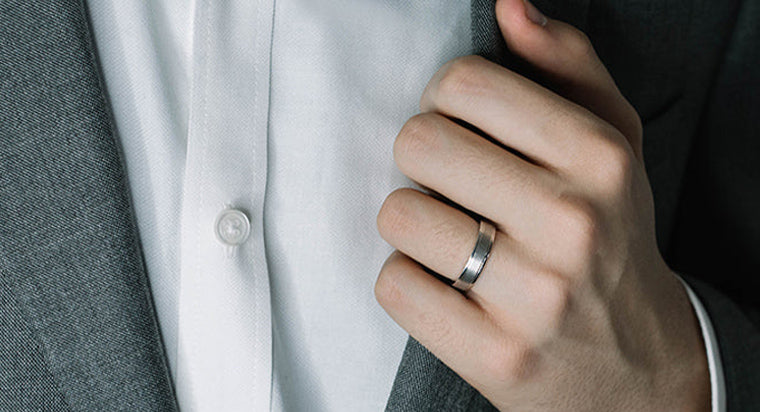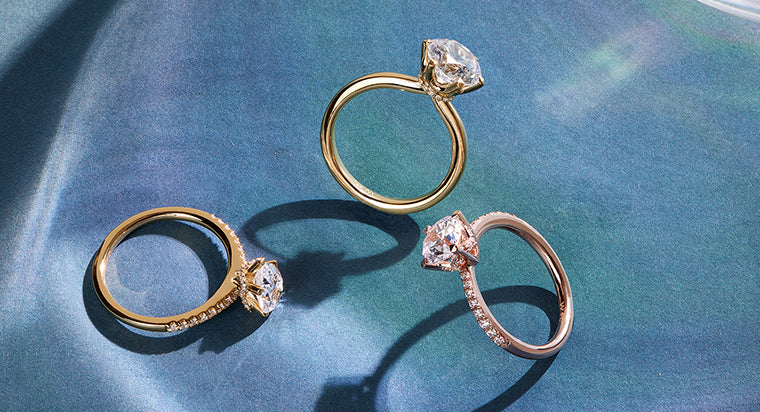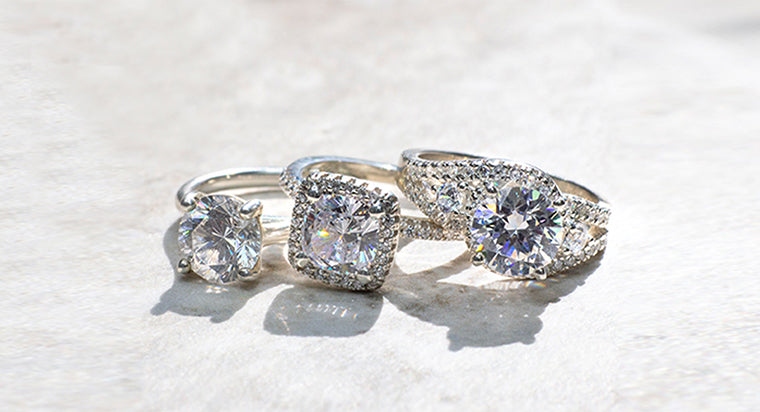Sterling Silver Guide

Walking into a jewelry store or viewing online, you might just be surprised by how many choices you have. From earrings and pendants to bracelets and rings, there are a variety of styles and designs to choose from. But that's not the only consideration. Materials are a significant factor, especially which metal you decide to set your stones in. One of the most popular options available is sterling silver.
TABLE OF CONTENTS
What is Sterling Silver?
Sterling silver is a timeless choice. It's modern and trendy. The cooler hue of sterling silver goes well with a wide variety of stones and gems. Additionally, this metal is relatively strong, making it a durable option for everyday pieces.
Sterling silver's strength is a result of its composition. Pure silver, like pure gold, is very soft. This makes it unsuitable for jewelry as it would be prone to scratching and bending. Sterling silver comprises pure (or fine) silver and an alloy of other metals. Typically, the ratio is 92.5% silver to 7.5% alloy. The 92.5% reason for sterling silver's common hallmark of "925".
The 925 hallmark on sterling silver jewelry means that 92.5% of the material is fine silver. Any less than that, and the jewelry cannot be called sterling silver. In most cases, the rest of the mixture will be copper. However, sometimes nickel or zinc can be added as well. Copper is a strong metal that helps increase sterling silver's strength. This makes it resistant to bending and scratching. However, sterling silver is not brittle, which means it can be crafted into beautiful designs and easily resized.
Sterling silver has a brilliant luster and a cool tone. Fine silver, or 999 silver, will be duller and more gray in color. Other metals that look like sterling silver are stainless steel and silver-plated jewelry. Stainless steel is incredibly strong and corrosion resistant but less valuable than sterling silver. Similarly, silver plated jewelry isn't commonly as desirable as 925 silver jewelry.
Silver-plated means that the piece has been electroplated, the process used to lay a thin layer of silver on top of a base metal. The base metal is generally copper, nickel, brass, or another standard metal. Silver plated jewelry offers the beautiful look of silver on a budget. Still, it is typically worth much less than jewelry hallmarked 925 sterling silver. Furthermore, if your silver plating wears off, you will notice the base metal underneath.
Sterling silver isn't entirely immune to discoloration either. It is prone to tarnishing from the alloy metals reacting to the air, which contains moisture and sulfur. The color will look noticeably duller and may take on a coppery or black hue. Thankfully, a jeweler can often restore tarnished sterling silver, so you can keep wearing your favorite piece of jewelry again and again.
Is Sterling Silver a Popular Jewelry Choice?
Speaking of wearing your favorite jewelry item, sterling silver is a popular choice for many. First, it is solid but lightweight. This means that your sterling silver hoop earrings won't tug your lobes, and sterling silver necklaces won't feel heavy around your neck. It is also hypoallergenic as long as nickel doesn't comprise a large percent of the alloy.
Although sterling silver isn't as expensive as gold or platinum, it's still considered valuable, making it an excellent investment. Many individuals enjoy sterling silver for everyday items like sterling silver bracelets. Sterling silver chains are also prevalent. However, you can occasionally find sterling silver engagement rings.
Sterling silver is more affordable than white gold or platinum, making it an excellent pick for couples on a budget. Because of its malleability, it can usually be designed into various gorgeous, delicate designs. Its cool tones are very adaptable, allowing it to work well with many stones, including diamonds. Emeralds and sapphires are also lovely gem choices for sterling silver jewelry.
Is It Possible to Spot Fake Silver?
The hallmark stamp is one of the most essential tools for spotting fake silver. If the silver comprises less than 92.5% fine or pure silver, it cannot be stamped 925 or sold as sterling silver. You will often find the hallmark stamp on the inside of rings, the post of earrings, or the small tags of bracelets or chains.
You can also test the authenticity of your sterling silver at home. The magnet test is one way to spot a fake. Silver is non-magnetic, so if you hold a magnet to it, it should not attract. The alloy metals are often either non-magnetic or too small of quantities to attract the magnet. If your sterling silver jewelry moves the magnet, it is probably not genuine sterling silver. Sterling silver does not have an odor. Smelling your jewelry can provide hints as to its authenticity. Silver plated jewelry, on the other hand, may have a strong coppery smell. Non-sterling silver metals usually emit an odor too that is metallic in nature. If you're having trouble discerning the smell, sniff the jewelry and then a copper penny, they should not smell the same.
What to Keep In Mind When Buying Sterling Silver Jewelry
Of course, when picking out sterling silver jewelry, you look at the design, shape, and color. However, don't forget to consider these factors too.
Check for the hallmark. Sterling silver should have the 925 hallmarks. Sometimes it may also be stamped "sterling." It is illegal for non-sterling silver to have this hallmark. Verifying your jewelry is stamped can help ensure its authenticity.
Check for the word "plated." Sometimes it may be written in fine print, but plated sterling silver is not the same as 925 sterling silver. Silver plated jewelry is not as valuable and can trigger skin sensitivities in individuals with allergies.
Look out for tarnishing. The item shouldn't be tarnished unless you're shopping for antique sterling silver jewelry. Only opt for new sterling silver that is lustrous.
Verify the seller. If you're purchasing sterling silver jewelry online, only buy pieces from a reputable brand with good reviews. Verify their return policy, checking for stipulations such as restocking fees.
How to Care for Your Sterling Silver Jewelry
As soon as you purchase your sterling silver jewelry, you want to take steps to keep it looking beautiful.
- Cleaning sterling silver can be done with warm water and mild dish soap.
- If your piece has tarnished, you can try using a paste made from baking soda and water. Soaking your jewelry in white vinegar and baking soda for a few hours can help remove stubborn tarnish.
- Regularly wearing your sterling silver items is good for it. Your natural oils can help maintain its shine.
- Wearing your jewelry while doing chores, though, can accelerate tarnishing, especially if you use sulfur cleaners. Using lotions, hairsprays, or perfumes while wearing your jewelry can also speed up corrosion and tarnishing.
FAQs
Does sterling silver tarnish?
What is a good grade for sterling silver?
Does sterling silver turn green?
Is 925 a good grade of silver?









